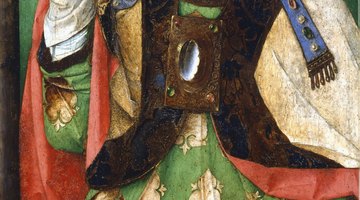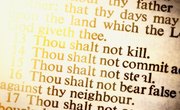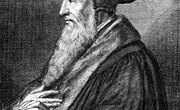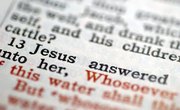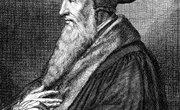The Puritans began a movement in the 16th century to purify the Church of England, or Anglican Church, by eradicating perceived remnants of Catholicism. Visible sainthood was central to this purification campaign. Puritans believed that individuals could prove in their daily lives that they were part of God’s chosen, or predestined, to receive salvation. Wholesome living and financial success would be visible signs of being one of God’s elect, otherwise referred to as sainthood. When it seemed England would not accept their reforms, many Puritans turned to America, where they created a “new” England full of visible saints.
Saint Augustine’s Invisible Church
According to the redoubtable Christian philosopher St. Augustine, who lived from 354 to 430, there exists a church full of unseen spirits.The invisible church is totally pure and comprised of all the living, dead, and unborn chosen by God for salvation. This invisible church was the model for Puritans. The Puritans hoped to achieve this highest level of purity, somehow, while alive.
Saint Augustine’s Visible Church
The visible church on earth was comprised of all the Christian congregations of the world. St. Augustine did accept the reality of impurity in visible churches. As a Christian, Augustine believed all people were by nature sinful; nevertheless, churches should attempt to exude purity by excluding from their ranks those of demonstrable low morals. St. Augustine’s invisible-visible dichotomy created a dilemma for Puritans. Though committed Anglicans, Puritans thought the Church of England, as a whole, failed to embody the visible qualities that would make people assume its members were part of God’s chosen few.
The Visible Church in England
Puritans wished there was some degree of vetting of prospective members of the Anglican Church to ensure the purity of congregations. King Henry VIII established the Church of England in 1534 after Pope Clement VII refused to grant the King a divorce of convenience. Henry wanted a divorce from the Queen to marry a younger woman. His plans thwarted, the King broke with the Catholic Church, establishing Anglicanism as his own Christian denomination. All English citizens were at birth accepted into this new church. This fact incensed the Puritans because this meant sinners, drunkards and gamblers were members of the Anglican Church.
The Puritans as Visible Saints in America
Twenty thousand Puritans left England for the American colonies between 1630 and 1643, after King James I began persecuting religious dissenters through fines and imprisonment. In America, Puritans, physically separated from the Anglican establishment, set up individual congregations. Each congregation had the right and duty to ensure their membership and included only visible saints.
As visible saints, the Puritans understood that theirs was a worldly struggle. Most Puritans displayed an intense anxiety over whether they were really one of God’s elect. To resolve this internal conflict, Puritans undertook actions to demonstrate tangible evidence of their sainthood. Members spent a portion of each day privately praying. Regular church attendance was a necessity. The Puritans embraced commerce, rationalizing that financial success was an outward sign of God’s grace. Whatever their occupation, American Puritans tried to excel, while remaining humble, establishing what became known as the “Protestant work ethic."
Related Articles
References
Writer Bio
David Kenneth has a Ph.D. in history. His work has been published in "The Journal of Southern History," "The Georgia Historical Quarterly," "The Southern Historian," "The Journal of Mississippi History" and "The Oxford University Companion to American Law." Kenneth has been working as a writer since 1999.

